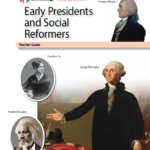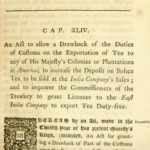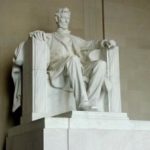The methods in which candidates, political parties and interest groups promote their positions and policies have evolved since the first television campaign ads aired. In this lesson, students will view videos of historical presidential campaign advertisements and analyze the features found within each to determine the overall effectiveness.
Political Ideology in America: Bumper Sticker Politics
Americans love to personalize their vehicles in a way you will not see in many other countries. This lesson explores political ideology by analyzing data on automobile purchases and bumper stickers. Students will learn generalizations about conservatives, liberals, Democrats, Republicans, libertarians, socialists and appreciate the American custom of advertising political thought in public. Free registration required to access the lesson plan.
Too Many Candidates vs. Too Few
Explore the role of third-party candidates and how the American political system makes it very difficult for anyone outside the Republican or Democratic Party to win the White House. Registration is required to view this resource.
The Constitution in Action: The Early Republic
This unit presents students with several such issues faced by Americans in the Early Republic as they tried to interpret and implement the Constitution. Lessons address “Origin of the Bill of Rights,” “Strict v. Loose Construction,” “Who Shapes Foreign Policy?” “State Challenges to Federal Authority: The Kentucky and Virginia Resolutions,” and “Political Parties and Presidential Electors: The Election of 1800.”
The Constitution in Action – Political Parties and Presidential Electors: The Election of 1800
History is the chronicle of choices made by actors/agents/protagonists in specific contexts. This simulation places students in the Early Republic and asks them to engage in the politics of those times. Acting as either Federalists or Republicans, they will be asked to develop strategies for electing their party’s standard bearer as president, using the Constitution’s complex system of presidential electors to their advantage.
Primaries: By Invitation Only?
Primary season can be a wild ride. Voters narrow the field of candidates in contest after contest, while the parties use complicated rules to try to control who ultimately secures the nomination.
Debate Watching Guide

This lesson is designed to help students view political debates. The resources provided support the critical evaluation of the candidate’s performances. Body language, demeanor, appearance and positions on key issues are analyzed in an attempt to help students determine the importance of debates to the election cycle. This lesson could be used in class or as a homework assignment.
Mandate: The President and the People
Early Presidents (CKHG Unit)

This unit (first half of Early Presidents and Social Reformers) focuses on the first seven presidents of the United States. Across 9 lessons, students learn about how the early presidents organized the federal government, built a national capital, directed a second war with Great Britain, more than doubled the size of the country, and formulated a “hands-off” foreign policy in the Western Hemisphere.
Causes of the American Revolution

This short video examines the Boston Tea Party of 1773 as the critical event which transformed political discussion about British imperial authority into an active source of controversy. By the early 1770’s, British and Americans thought differently about the extent of Parliament’s power to legislate for the American colonies. Professor Jack Rakove notes that British punishment of Massachusetts for its defiance of the Tea Act precluded a peaceful resolution of the political controversy.
